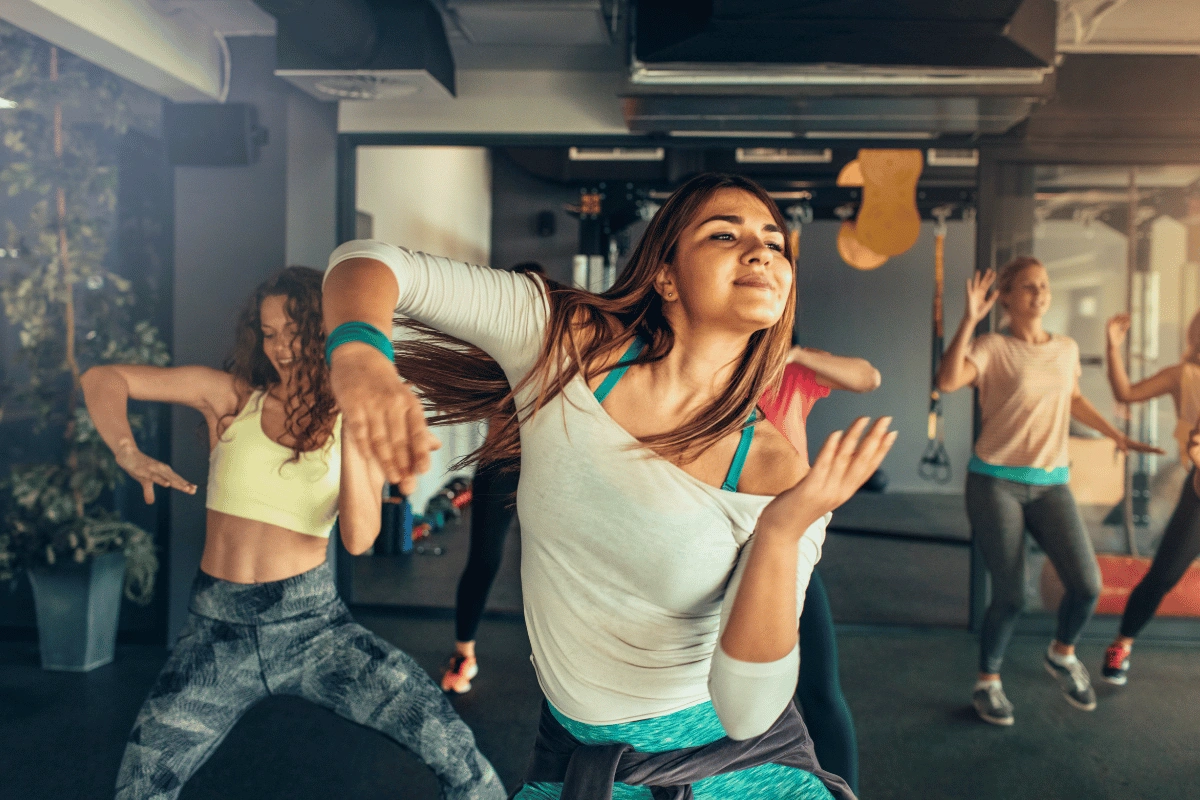Are you ready to elevate your dance game and command the stage with confidence and precision? If so, mastering control over your movements is essential. Whether you’re a seasoned dancer looking to refine your technique or a novice eager to unlock your full potential, the key to captivating performances lies in cultivating control. In this guide, we’ll delve into actionable tips and techniques to help you dance with greater finesse, stability, and grace. Get ready to take your dance journey to new heights as we explore the art of control on the dance floor.
Be aware of your stopping points
Pay attention to your points of cessation. If you aspire to dance with enhanced precision, it’s imperative to discern where your movements naturally conclude. Picture it akin to having a coloring book.
What are stopping points? Stopping points in dance refer to specific moments or positions within a choreographed sequence where movement transitions or concludes. These points serve as markers that guide dancers in their execution, providing clarity and structure to their performance.
Stopping points can take various forms depending on the choreography and style of dance. They may coincide with key beats or accents in the music, significant moments in the narrative, or specific poses that define the aesthetic of the piece.
Understanding and mastering stopping points is essential for dancers to maintain precision, consistency, and synchronization with the music and fellow dancers. By effectively identifying and adhering to these points, dancers can ensure smooth transitions between movements, enhance the visual impact of their performance, and convey the intended emotion or message of the choreography.
In this analogy, the outlines serve as the pivotal “points of cessation,” indicating where your movements ought to terminate.
Acquainting yourself with these delineations guarantees that your movements neither exceed them (coloring outside the lines), nor truncate them prematurely (leaving an awkward gap).
Attaining precision in aligning your movements with these markers fosters a sense of clarity and cleanliness in your execution, as you gain a nuanced understanding of precisely where to guide your body. This marks the inaugural stride towards mastery over your movements!

Know your pathway in between those points
Understanding the trajectory between these delineated points is pivotal. It’s within the execution of the movement from point A to point B where your mastery of control truly manifests. Begin by delineating the pathway. Is it a direct trajectory, akin to a straight line?
Consider, for instance, the movement of your hand: is it traversing from your right shoulder to your knee, or perhaps from your chest to your stomach?
This inquiry forms the crux of my instructional dialogue in class, as it’s often easier to visually discern the key positions that the choreographer intends to hit, yet trickier to grasp the subtleties of the movement unfolding between these points.
Choose which muscles to use and when
Consider the orchestration of your muscular engagement as akin to maneuvering a marionette. Each limb and body part operates under the direction of a distinct “string,” metaphorically speaking, controlled by the intricate mechanisms of your brain.
As you embark on your dance journey, recognize that these “strings” are intangible yet potent controls residing within your cognitive domain.
Familiarize yourself intimately with the sensations associated with the movement of individual body parts. Practice transitioning into various positions with deliberate slowness, allowing yourself to explore the full range of motion and proprioceptive feedback. Embrace the challenge of assuming even the most awkward of positions, for it is through such exploration that your body adapts and learns.
Cultivate the capacity to sustain any given position by acquainting your body with its demands, fostering muscular endurance and proprioceptive acuity. Immerse your mind in this experiential learning process, allowing it to imprint the intricate nuances of each movement, thereby forging a kinesthetic memory that guides your execution with precision and fluidity.

Play with power
Harnessing the interplay between control and power in your dance execution is paramount. It necessitates a keen awareness of the energy you exert, ensuring it remains finely calibrated to the demands of the performance.
What is power? Power in the realm of dance embodies a multifaceted concept that extends beyond mere physical strength. It encompasses the dynamic interplay between energy, force, and expression, essential elements that imbue movement with vitality, impact, and resonance.
At its core, power is about harnessing the body’s kinetic potential to generate compelling and captivating performances. It involves the deliberate modulation of intensity, from the subtlest of gestures to the most commanding leaps, to convey emotion, narrative, and artistic intent.
Yet, power in dance is not merely about raw strength; it is equally about finesse and control. It involves the strategic allocation of energy, timing, and spatial awareness to create moments of heightened drama, fluidity, and grace.
Moreover, power is intimately intertwined with musicality, as dancers synchronize their movements with the rhythm, tempo, and dynamics of the accompanying music. It is through this synergy that power finds its fullest expression, enhancing the emotive impact and visual allure of the performance.
Drawing upon the analogy of the coloring book, consider your power akin to the pressure applied with your crayon upon the paper’s surface. Strive to strike a delicate balance, avoiding both the pitfalls of excessive force, which might lead to bleeding through the sheet, and the inadequacy of too light a touch, resulting in faint, insubstantial markings.
Gradually attuning yourself to the nuances of power levels, even the most rudimentary movements within choreography will acquire a sheen of sophistication and finesse.
Ultimately, mastery over power not only enhances the aesthetic quality of your performance but also serves as a conduit through which you can eloquently articulate the nuances of musicality, thereby elevating your dance to a realm of heightened expressiveness and resonance.
Increase your flexibility
Expanding your flexibility is instrumental in enhancing your dance prowess. By broadening your range of motion, you unlock the potential for greater agility and fluidity in your movements, minimizing physical strain.
Prior to launching into your dance routine, it’s imperative to embark on a light and targeted warm-up/stretching regimen. Consider this as priming your body for optimal performance.
For instance, if you’ve cultivated the ability to execute splits, executing high kicks becomes markedly less physically taxing. Your movements become more controlled, devoid of tremors or strain.
By incorporating regular stretching sessions into your routine and diligently warming up your muscles before each dance session, you gradually augment your flexibility. This empowers you to exert finer control over the trajectory of your movements, be it elevating a kick to greater heights or executing graceful, sweeping motions with fluid ease.
For comprehensive guidance on effective stretching techniques, refer to the accompanying video, which offers invaluable insights on best practices and pitfalls to avoid in your quest for flexibility.

Be stable on your feet
Ensuring stability in your stance is paramount to executing dance movements with finesse and confidence. Picture yourself seated on a chair with legs made of toothpicks — the sense of precariousness is palpable. Similarly, when your lower body lacks strength and stability, it undermines the controlled appearance of your entire dance performance.
Achieving stability begins with mastering the art of balance. This entails a keen understanding of how to distribute your weight effectively with each movement. For instance, when lifting your left foot, the bulk of your weight should be centered on your right foot.
By cultivating a firm foundation, you lay the groundwork for enhanced control and precision in your dance repertoire. Remember, control is a skill that can be honed through practice and dedication. Implement these strategies into your routine, and you’ll notice a marked improvement in your ability to translate the movements envisioned in your mind into graceful reality.
We invite you to share your own techniques for dancing with greater control in the comments below. Let’s foster a community of shared learning and growth!
Moreover, embrace the opportunity to draw inspiration from accomplished dancers who epitomize control in their performances. Below, we’ve curated a selection of our favorite “controlled” dancers, providing you with ample material for training and emulation in the comfort of your own home.
Summary
“Want to dance with more control?” offers comprehensive insights and practical advice for dancers seeking to enhance their technique and performance quality. The guide emphasizes the importance of stability, flexibility, power management, and understanding movement pathways to achieve greater control on the dance floor. By incorporating tips such as mastering weight distribution, increasing flexibility through regular stretching, managing power levels to match musicality, and honing proprioception, dancers can refine their skills and execute movements with precision and finesse. With clear explanations and actionable strategies, this guide empowers dancers of all levels to elevate their dance experience and showcase their artistry with confidence and control.


Leave a reply